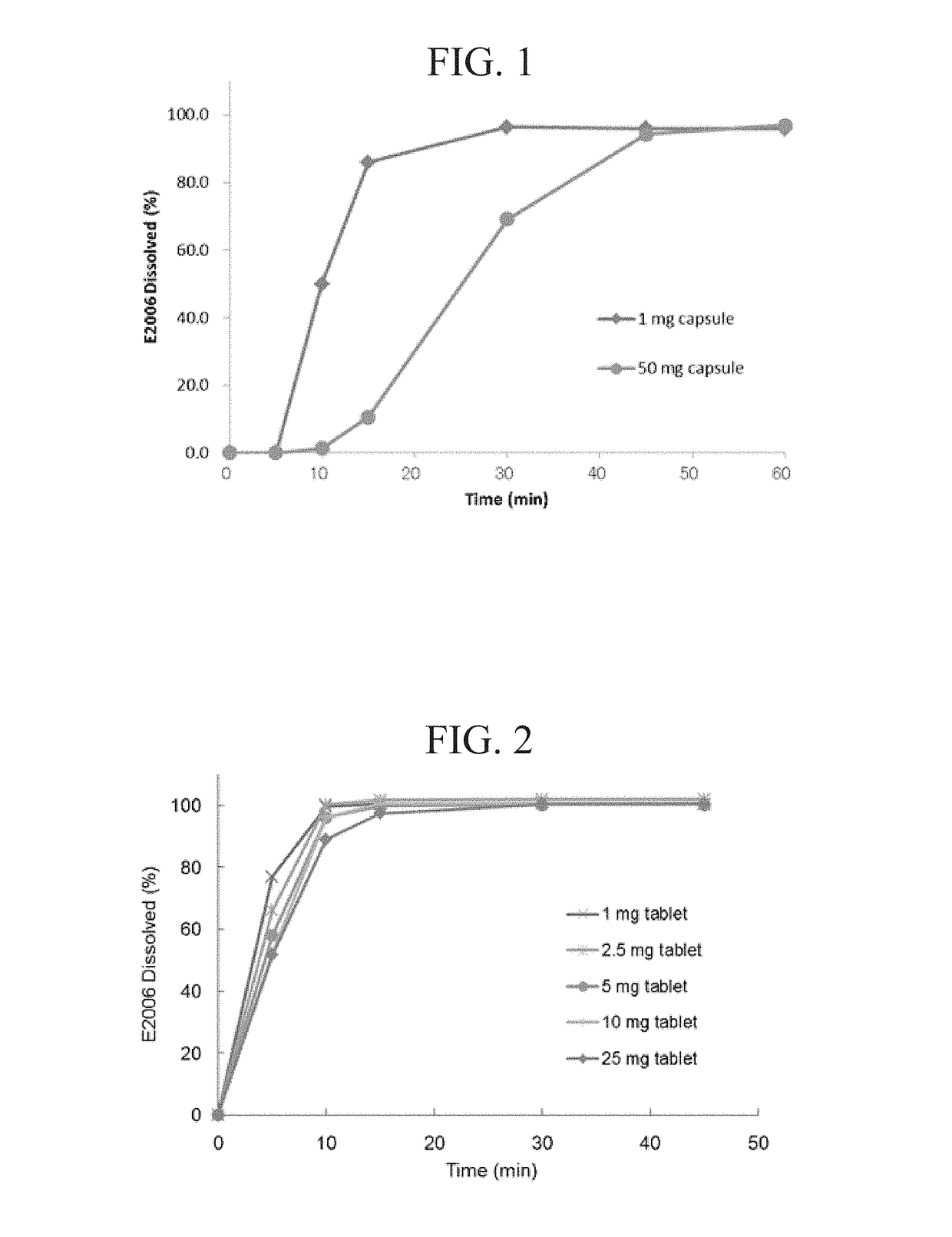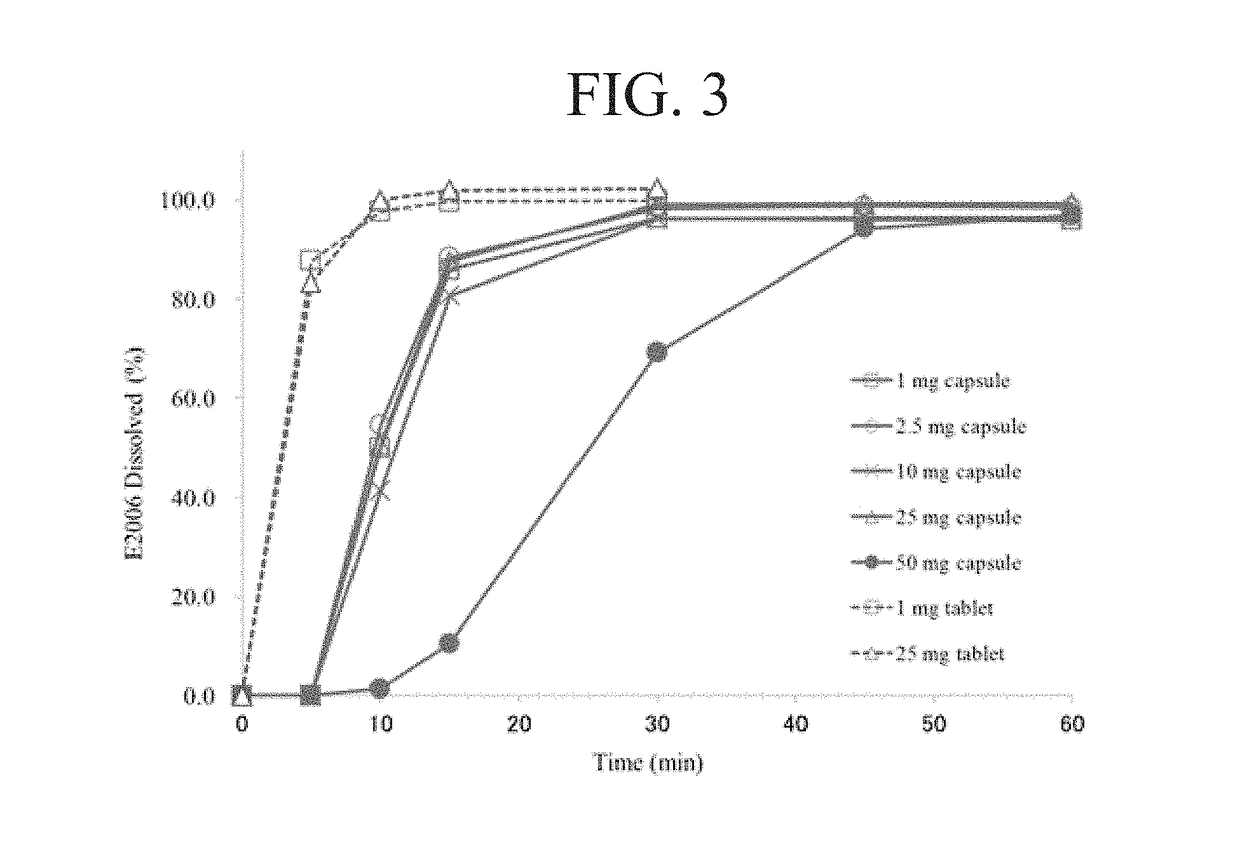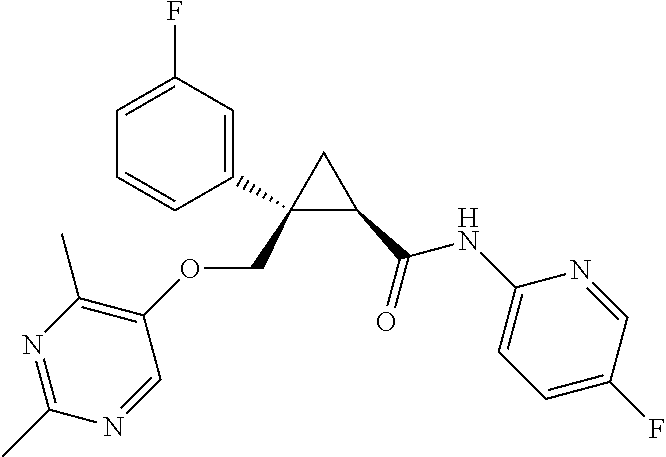Compositions and methods for treating insomnia
a technology for insomnia and compositions, applied in the direction of drug compositions, capsule delivery, nervous disorders, etc., can solve the problems of patient waking up, next-day residual sleepiness, difficult to set the proper dose, etc., and achieve the effect of simple reaction
- Summary
- Abstract
- Description
- Claims
- Application Information
AI Technical Summary
Benefits of technology
Problems solved by technology
Method used
Image
Examples
example 1
Single Dose Study (001 Study)
[0179]This was a randomized, double-blind, placebo- and active-controlled, sequential, single-dose study. The study consisted of two parts, Part A (healthy subjects) and Part B (otherwise healthy subjects with primary insomnia).
[0180]The primary objective in this study was to evaluate the safety and tolerability of single oral doses of compound A administered in the morning to healthy subjects, and to evaluate selected pharmacodynamic (PD) parameters (e.g., polysomnographically defined sleep measures) with regard to dose response in subjects with primary insomnia following single oral dosing of compound A in the evening approximately 30 minutes prior to the sleep period, compared with 10 mg zolpidem and placebo.
[0181]The secondary objective was to evaluate the safety and tolerability of single oral doses of compound A in otherwise healthy subjects with primary insomnia, and to assess the pharmacokinetics (PK) of compound A following administration of sin...
example 2
Multiple Ascending Dose Study (002 Study)
[0201]This was a single-center, randomized, double-blind, placebo-controlled, sequential, multiple-dose study.
[0202]Primary objective of this study was to evaluate the safety, tolerability, and pharmacokinetics (PK) of compound A after multiple doses administered orally, once daily in the evening for 14 days in healthy adult subjects. In addition, the objective of this study is to identify the maximum tolerated dose (MTD) or a sufficiently high tolerated dose of compound A to provide a safety margin relative to anticipated therapeutic dose.
[0203]A total of 48 healthy adult subjects (18 to 55 years) were to be enrolled into 1 of 6 cohorts sequentially in a gradual dose escalation manner, and randomized to receive either compound A or compound A-matched placebo in the evening 30 minutes before habitual bedtime, and after 3 hours fasting, for 14 days. Each cohort was to comprise 6 compound A-treated subjects and 2 placebo-treated subjects. Blood...
example 3
Crossover Study of Relative Bioavailability of Tablet Versus Capsule Formulation (005 Study)
[0218]Single-center, open-label, randomized crossover study was conducted to evaluate, in healthy adult subjects, the bioavailability of single solid oral doses of compound A in tablet formulation relative to single oral doses of compound A in capsule formulation at 2.5, 10, and 25 mg. Another objective of the study was to evaluate the safety and tolerability of tablet formulations of compound A at 2.5, 10, and 25 mg in healthy adult subjects. Approximately 36 subjects were randomly assigned to one of three cohorts (approximately 12 subjects per cohort) and received both a single dose of compound A as a capsule formulation and a single dose of compound A as a tablet formulation, in random sequence, in a 1:1 ratio. The doses were 2.5 mg, 10 mg, and 25 mg.
[0219]The study had two phases: Prerandomization and Randomization. The Prerandomization Phase lasted for up to 21 days and included a Screen...
PUM
| Property | Measurement | Unit |
|---|---|---|
| concentration | aaaaa | aaaaa |
| concentration | aaaaa | aaaaa |
| concentration | aaaaa | aaaaa |
Abstract
Description
Claims
Application Information
 Login to View More
Login to View More - R&D
- Intellectual Property
- Life Sciences
- Materials
- Tech Scout
- Unparalleled Data Quality
- Higher Quality Content
- 60% Fewer Hallucinations
Browse by: Latest US Patents, China's latest patents, Technical Efficacy Thesaurus, Application Domain, Technology Topic, Popular Technical Reports.
© 2025 PatSnap. All rights reserved.Legal|Privacy policy|Modern Slavery Act Transparency Statement|Sitemap|About US| Contact US: help@patsnap.com



